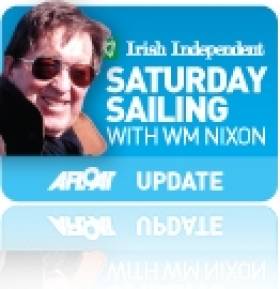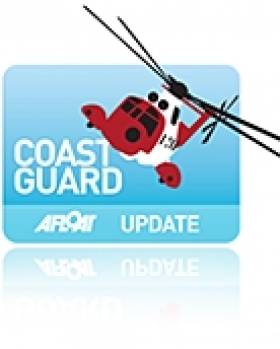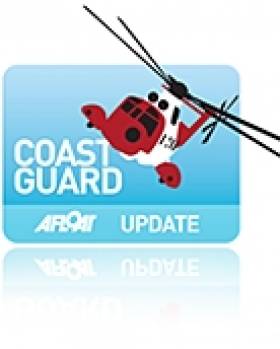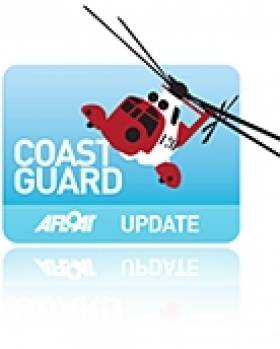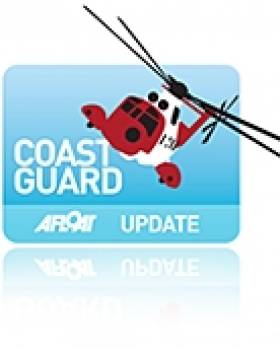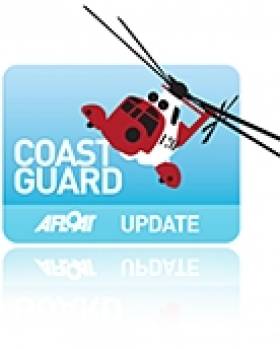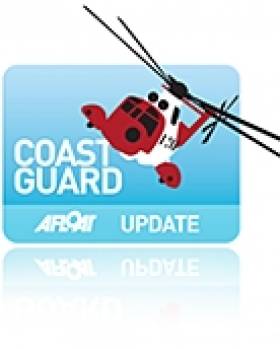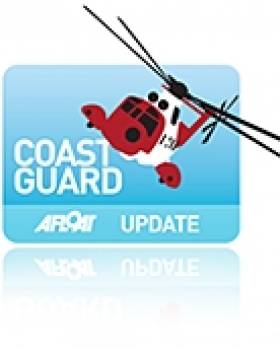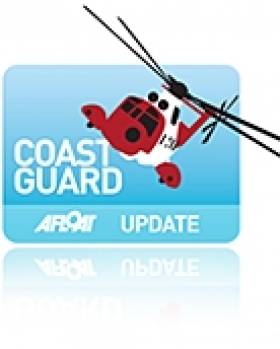Displaying items by tag: Coast Guard
What Has Happened to Sailors' Traditional Self–Reliance At Sea?
#safetyonthewater –Can it really be true that lifeboat call-outs in Ireland in 2013 – most of them for recreational boating of some sort - showed a staggering increase of 43% over 2012? W M Nixon discusses the disturbing figures, and considers whether it is possible to re-build the traditional amateur seafaring tradition of competence and self-reliance.
Time was when the most respected sailing folk, the people with the highest standards in their boats and in their use of them for their dedicated style of seafaring, were accustomed to sail the sea on the principle that they would much rather drown than cause any inconvenience or danger to other seafarers in any way whatsoever.
This applied particularly in the matter of being rescued. Being rescued just wasn't done. It was a sign of appallingly poor seamanship. Indeed, having what other people might describe as an adventure of any kind was frowned upon. "An adventure" was looked upon by the pioneers of cruising - just as it was looked upon by their contemporaries, the top explorers - as evidence of incompetence.
It was an admirable if impossibly idealistic attitude, which had its roots in the earliest days of amateur seafaring. In that distant era, the first very few pioneers were venturing forth for pleasure on seas where working people with much less in the way of economic resources were struggling to make a usually poor and often dangerous living as fishermen. To emphasise the difference, pleasure sailors only fluttered about the place in summer like butterflies, whereas those who worked the sea in small boats had to face its ferocity all year round.
Also sharing the sea were the crews of cargo carrying vessels whose demanding owners did not welcome tales of their vessels being delayed and the valuable cargoes put at risk, even for the shortest possible periods, in order to assist or rescue some incompetent amateur. As for the regulators of the sea, the naval ships and the revenue cutters, they were naturally suspicious of people going about their inexplicable business with "pleasure" as their reported objective, sailing hither and yon in their strange little vessels.
They undoubtedly were "little" vessels, as the new sport of cruising with its codes of a high standard was developed by the emerging middle classes of the 19th Century. Unlike the aristocracy and monarchy, who would sail the sea in large yachts with crowds of attendants and everything – including rescue if needs be - done in a very public manner as part of the grand life's rich tableau, the middle classes valued privacy above everything else.
Thus the code of self-reliance in cruising evolved, propounded by folk like Richard Turrell McMullen, who developed the principle of total self-reliance to such an extent that even in coastal waters he cruised single-handed in his final years. And even when pleasure boats numbers and rescue services had developed to an impressive level in the late 20th Century, the "shame of being rescued" was still a very potent attitude which encouraged high standards in boat maintenance and seamanship.
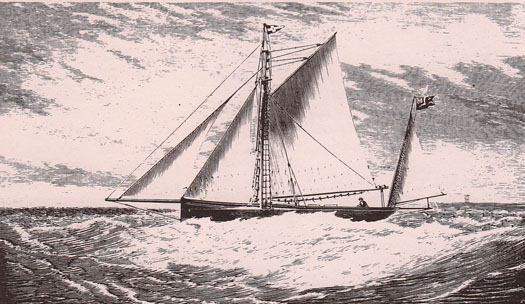
Pioneering seafarer Richard Turrell McMullen in his 42ft Orion, with which he cruised the Irish coast in 1869. McMullen expounded a doctrine of self-reliance and competence in amateur sailors, and would have regarded being assisted by the lifeboats as a matter of extreme shame.
But today, well into the second decade of the 21st Century, the RNLI call-out figures for Ireland do not make happy reading for advocates of rugged seafaring self-reliance. Could it be that the ubiquitous presence of highly-visible lifeboats in our main harbours, with their presence further publicised at major rescues, is creating excessive haste in calling them out for non-emergency reasons?
Admittedly the summer of 2013 was so good that there were many more people afloat in June, July and August than in 2012's grim conditions. Thus many of those rescued will have been casual impulse boaters, rather than dedicated seafarers. But nevertheless a year-on-year increase of 43% in lifeboat launchings, most of them for recreational boating of some sort, is very discouraging for an activity which supposedly prides itself on its capacity for sensible self-regulation, and derives satisfaction from overcoming challenging conditions without assistance.

The Dun Laoghaire lifeboat on exercise in Dalkey Sound. This was Ireland's busiest station in the summer of 2013, with 34 call-outs in June, July and August Photo: David Branigan/Dun Laoghaire RNLI
For the record, Dun Laoghaire was the busiest station with 34 call outs. Portrush in County Antrim was next on 26, just ahead of Crosshaven with 25, while Fenit, Wicklow and Skerries (where their new boat, the Atlantic 85 Louis Stimson, was named and dedicated on Saturday September 7th) were all on 17.
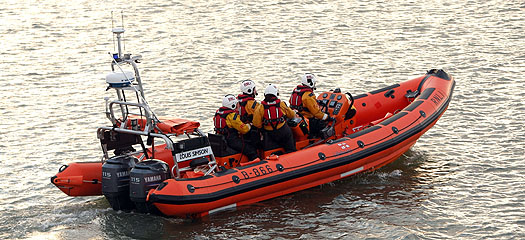
The new lifeboat at Skerries, an Atlantic 85, was dedicated and named the Louis Simson on September 7th. The Skerries station had 17 call-outs during the three summer months.
Of course there are those who will claim that, in many instances, talking of "rescues" would be over-stating the case. When a situation looks like being serious from the outset, the Coastguards – and particularly their helicopter – will get involved. In fact, so many genuinely life-saving events involve helicopters that it's surprising no-one seems to have thought of a rescue helicopter service service funded by charities. Maybe they have, but have found it would be impossibly expensive. In any case, with lifeboats, there's the obvious and stirring maritime link. "Those in peril on the sea" must be one of the most recognisable phrases known to us, and providing charity support to lifeboats is a direct and very satisfying way of connecting with it.
But the fact that the lifeboats receive so much of their funding from charity, and are manned largely by volunteers, adds to the moral overtones when any rescue is successfully carried through. And as we cannot know how even the most minor boat difficulty might go pear-shaped at some future stage, then if the lifeboat gets involved, the perception is that you've been rescued however minor the problem may have been, and notwithstanding the fact that the lifeboatmen themselves may phrase their report to spare the rescued crew's blushes.
The lifeboatmen's attitude is better safe than sorry, and much better safe even if just slightly embarrassed. But an analysis of the incidents in Irish waters is intriguing, and they provided some events with unwelcome publicity. For instance, the ISA's Gathering Cruise-in-Company from Dun Laoghaire towards Dingle in July experienced four different lifeboat call-outs.
The highest-profile incident was the rescue of the crew of 30 from the tall ship Astrid when her engine failed on the short hop from Oysterhaven to Kinsale in fairly rough conditions of onshore winds. One possible story suggests that prior to her arrival in Ireland, one of Astrid's fuel tanks had been accidentally filled with fresh water, which is something that can easily happen in a large and complex old sailing ship during a busy turnaround time in port. In line with their spirit of self-reliance, Astrid's crew had reportedly declined offers of professional assistance in making the tanks diesel-ready again. But despite their best efforts, it seems there might have still been a small quantity of fresh water left, quite enough to cause what became a catastrophic engine stoppage.
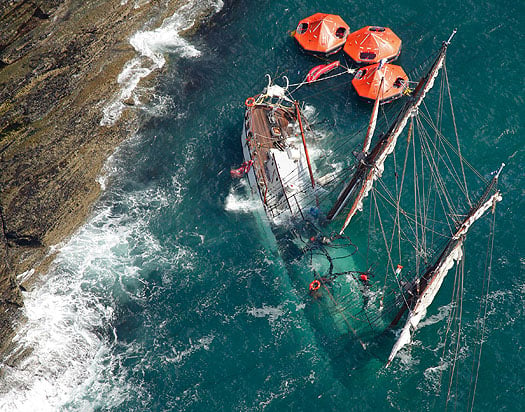
The end of a dream. The sinking of the privately-owned Dutch sail-training tall ship Astrid was a catastrophe, but it wasn't a tragedy as all 30 on board were efficiently rescued by the lifeboats. Photo: Bob Bateman
In fairness to The Gathering Cruise-in-Company, the Astrid sinking was a big ship event with which they became associated almost incidentally. But the three other call-outs were directly linked. The second most serious (after the Astrid) of the Cruise-in-Company's call outs was for the Ballycotton Lifeboat for an injured crewman on a 42ft yacht six miles southwest of the port. Injuries were such that the casualty was transferred by lifeboat to a waiting ambulance at Ballycotton, then as the injured person was a key member of the 42ft yacht's crew of three, the lifeboat returned to the cruiser and escorted her to port.
The other two lifeboat callouts for the Cruise-in-Company were to assist a yacht with her propellor fouled by a fishing pot marker off Kilmore Quay, and to tow in one of the participating boats after her engine had failed off Kinsale.
The hazard of getting fouled in fishing pot lines is even greater in Ireland than other similar places like Cornwall, where Ben Ainslie has written of his family's experience of having their fine yacht driven ashore at the entrance of the Helford River and getting badly holed on rocks, after the propellor had knotted itself in a lobster pot line. The lobsters and crabs along the Irish coast being even more prolific, it's a constant problem when under power, and there are few challenges more daunting than motoring in late afternoon straight into the sun on passage from Carnsore Point to Kilmore Quay, and knowing that the entire route is a maze of pot markers, some quite clearly defined, others lurking just below the surface in the strong tides, and all virtually invisible with the notorious brightness of the sunny southeast right in your eyes.
So for cruising in Ireland, an obvious solution is one of those cunning little cutting devices fitted to the propshaft to slice through any ropes, but even they can be defeated by too much rope. When it does happen, a serrated bread knife with the means of and quick and easy attachment it to the boathook can sometimes work wonders.
But the proliferation of cruisers with SailDrives exacerbates the problem. They may fulfil the designer's dream of having the propellor immersed as deeply as possible, and in clear water too, but it means they're perfect targets for wayward pot lines, and you need a diver or a liftout to get at them if they become fouled.
But do propellers really need to be so deeply immersed? After all, in motorboats they're close under the surface, and often reasonably accessible by long-arm methods from a dinghy. Admittedly with a sailing boat with her extra pitching through having a mast, there is a danger that a shallow-mounted propellor will come out of the water as she punches into a head sea. But for years I'd a share in the Contessa 35 with a high-mounted propellor well aft, and it never came out of the water while motoring in a head sea. Yet thanks to the boat's pintail stern - which had few other merits - you could just about reach the prop from the dinghy, whereas today's wide-sterned boats might preclude that. Whatever, in re-aligning the engine in my current boat, something which just had to be done when I discovered the builders had installed it at an angle of 21 degrees plus, when the manufacturers insist it should be no more than 15 degrees with 7 degrees is an ideal target, I now have a setup where the propellor can be reached by clambering down the stern boarding ladder.
All of which is little enough comfort for a cruising boat with a fouled propellor being rescued by the Kilmore Quay lifeboat during the Cruise-in-Company, but that in turn begs the question: Where were the other cruisers-in-company when this situation arose? The notion behind a cruise-in-company is that there's a feeling of mutual support, and minor problems can be dealt with by assistance from your fellow participants. But even in the companionability of a cruise-in-company, could it be that we've become so accustomed to hearing about the use of rescue services that even with buddy boats presumably near, an everyday get-you-home problem can still lead to an emergency call?
It seems to have happened with the lifeboat going to that engineless boat's aid off Kinsale and more recently the maritime community expressed shared embarrassment when the crew of a cruiser-racer of a notably able type called out the lifeboat when their engine failed as they sat becalmed off Wicklow Head.
But as boat numbers increase, professional privately-run services develop to meet the growing need for assistance like this. In boat-crowded places like Long Island Sound, and indeed on many parts of the coast of the USA, commercial assistance and get-you-home services have been a feature afloat for many decades. And anyone who has been around the Solent will be familiar with the SeaStart service, to which you can subscribe as a sort of insurance, and which now does commercially many of the tasks which used to take up too much of lifeboat time.
{youtube}VrqzFIfV1w4{/youtube}
Even the colours of their boats suggest that SeaStart is the same reassuring presence afloat as the AA is ashore.
Interestingly, SeaStart now sees its role as including the education of its less-experienced subscribers in order to raise their standards of boat and equipment maintenance, and improve their attitudes to sailing the sea. Yet because it's all being done by what is essentially a commercial organisation, those availing of its services don't feel themselves being morally oppressed by a do-gooder organisation or an interfering nanny state.
It works well in a densely-boat-populated area like the Solent region, but we have to face the reality that Ireland has an enormous and often rough coastline, and boat numbers are relatively very few, and often far between. So for now and the foreseeable future, most of us in day sailing, cruising and offshore racing are going to have to rely on self-regulation with a sensible attitude to seafaring, and the use of voluntary services supported by charitable donations in emergencies.
The situation is of course very different in inshore racing, where highly organised club rescue teams with their crash boats, and an admirable ethos of efficiency among their crews, set a standard of self-help and self-regulation which is a credit to our sport. But as soon as the scope of the event spreads from the purely local, and the boat-size goes beyond dinghies, we find ourselves interacting with national emergency and rescue services.
So in seeing the MOD 70 trimaran capsizing in Dublin Bay in June and observing the flurry of helicopter and lifeboat activity – all very necessary as two crew were soon in hospital, one for an extended stay with a severely fractured pelvis – we were seeing a new world. It's a situation very far removed indeed from the schooner America making her unaccompanied way across the Atlantic in 1851, with no contact with anyone until, without fuss or bother, she prepared for the historic race around the Isle of Wight which in its turn was sailed without any expectation of the use of rescue services.
And for those of us in the less exalted areas of personal choice sailing, it really is a matter of self-regulation if we are going to avoid having the authorities impose regulation upon us. In considering this disturbing 43% increase in lifeboat call-outs in 2013, it's difficult to avoid the conclusion that the only reason there aren't threatening rumbles of regulation and inspection from the government is simply because of the dire circumstances of the national finances.
Were we not in a situation of government cutbacks on every front, it's highly likely there'd already be some advisory body looking at ways of making the boating world adopt a more responsible, self-reliant and disciplined attitude towards its activities. That in turn would lead to an increased inspectorate and more supervision, with further erosion of the sense of freedom in sailing the sea. And in the end, it's boat people who would have to pay for it themselves. It's up to us to protect this activity we cherish so much, and to treat it with the respect it deserves.
#coastguard – A 21-year-old man from Crosby, Merseyside, has been awarded this year's UK Maritime and Coastguard Agency (MCA) Trainee Officer of the Year award.
Philip Cave, from Fleetwood Nautical College, whose training company is Princess Cruises, has been recognised for his dedication and achievements throughout his training.
The maritime industry is of crucial importance to the UK. It brings £14 billion per year to the UK economy. An essential part of this is the vibrant maritime training programmes available to train new seafarers.
The award aims to encourage and recognise quality within the maritime industry. Nominations are made by nautical colleges alongside the trainee's sponsoring company. The winner is decided by a panel of judges, including representatives from the MCA and other industry figures.
Philip said:
"Ever since I was invited onto the bridge eight years ago whilst on a cruise, I have wanted to be a Deck Officer, and qualifying as a 3rd Officer makes me feel that I have achieved my goal. I would like to thank my lecturers for their tireless and continuous support and Princess Cruises for giving me a First Class Cadetship. I know I have a great future to look forward to as a fully qualified officer with the company."
Philip Naylor, Director of Maritime Safety and Standards at the MCA, said:
"In presenting this award to Philip Cave, the MCA is absolutely delighted to recognise the enthusiasm, commitment and positive attitude that he exhibited at all stages of his training. These are qualities that will help to shape the future leaders of our maritime industry in the UK and which will ensure that we can maintain the UK's position of global leadership in maritime business.
"I would also like to offer Philip my very best wishes for an enjoyable and fulfilling career at sea."
James Hallé, HR Manager at Princess Cruises, said:
"During the last three years, Phil has been an absolute pleasure to deal with. A model cadet, Phil always conducted himself in a professional manner and has attained high academic results through nothing other than hard work and determination.
"Phil has been favourably reported upon during each of his ship appointments and I believe this is down to his respectful and courteous manner. Phil has developed in to a competent Junior Officer who will go from strength to strength. We are all very proud of him and wish him every success in his on going career."
The award was presented at the Marine Society and Sea Cadets Ninth Annual Court in London yesterday by Shipping Minister, Stephen Hammond MP.
HM Coastguard Modernisation Programme Announced
#coastguard – The timetable for completing the modernisation of Her Majesty's Coastguard has been announced.
The new national network is scheduled to be completed by the end of 2015, with the National Maritime Operations Centre (NMOC) operating from autumn 2014.
The introduction of the national network will enable the NMOC and all the other 10 Coastguard Operation Centres (CGOC) to work together to manage the workload on a national scale. This means in a search and rescue incident, even though the coordination will still be managed by the relevant CGOC, there will be a much bigger and better support network available nationally.
There will be no reduction in rescue resources, which remain unchanged by the modernisation of HM Coastguard. The availability of Coastguard Rescue Teams, lifeboats, rescue helicopters and other rescue assets will be unaffected.
A key outcome from the modernisation plan is more rewarding Coastguard jobs, with additional responsibilities and the appropriate pay to match.
Sir Alan Massey, Chief Executive of the Maritime and Coastguard Agency (MCA) said:
"This is an exciting time. We are moving into a new era for HM Coastguard that will reinforce the ability of our staff to ensure the safety of seafarers and the public. We want to continue being a world-class organisation that is committed to preventing loss of life, improving maritime safety, and protecting the marine environment. At the same time, our Coastguards can look forward to more satisfying and better rewarded careers.
"We realise that this whole change programme will be tough for some of our people, particularly those who feel that they have no future with HM Coastguard. We recognise that, and will do our very best to work with every individual to ensure they are properly equipped and supported in making the best decision for them.
Coast Guard Warning on Jet Ski Dangers
#coastguard – HM Coastguard is again warning people of the dangers of jet skis and personal watercraft (PWC) after a busy summer in North Wales.
Between 1 May and 1 September this year, Holyhead Coastguard dealt with almost 30 incidents involving PWCs. These ranged from mechanical issues, running out of fuel or even concern that PWCs were too close to shore or endangering swimmers.
In one incident over the recent bank holiday weekend, a man and a woman suffered serious injuries after two jet skis collided near Porthmadog. Another incident over the same weekend in Abersoch left a boy with minor injuries after the kayak he was in was struck by a jet ski.
Ray Carson, Rescue Coordination Centre Manager at Holyhead Coastguard, said:
"The majority of PWC users are responsible and often assist us during search and rescue incidents. However, during the summer months we have received complaints that jet skis and PWCs have gone too fast and too close to shore. This is concerning to us as it's putting swimmers and other beach-goers in danger. You should check if any bylaws are in place, stick to them and be respectful of others in the water.
"You also need to make sure you know how to operate these powerful machines. The last thing you want is to find yourself in the water after being thrown off. This is why we always recommend that you wear a buoyancy aid and ensure you're using a kill cord, so if you end up in the water, the engine will stop.
"Remember, if you see anyone in difficulty at the coast, call 999 and ask for the Coastguard."
Inspector Dewi Jones with North Wales Police said:
"Incidents involving inappropriate, unsupervised or careless use of sometimes powerful marine craft impact upon all the emergency services when our resources may be required elsewhere. Unfortunately this summer we have seen incidents locally where people have been injured with only good fortune preventing serious injury or worse.
"Working with HM Coastguard, RNLI and other emergency services I fully support the Coastguards warning and advice and ask all marine craft users to adhere to safety advice, act responsibly and consider others in the water so everyone can enjoy the pleasures of our beautiful beaches and seas."
Coast Guard Recover Boy from Welsh Cliffs
#coastguard – Just before 9pm last night Milford Haven Coastguard received a 999 emergency call reporting a 12–year old boy who had been cut off by the rising tide at Saundersfoot on the Welsh coast.
The boy climbed up the cliff to avoid the rising water and tried to take shelter in undergrowth at Perrys Point, Saundersfoot. Milford Haven Coastguard requested the Tenby lifeboat to the area to locate the casualty.
The weather conditions on scene deteriorated and the boy became stuck in the thick scrub. Windy conditions, complete darkness, low cloud and substantial vegetation prevented the possibility of a helicopter recovery so the Coastguard Rescue Teams from Tenby and St Govans used cliff rescue equipment to locate the boy and lower him safely to the lifeboat crew below, who were talking to and reassuring him throughout the rescue. Once securely onboard the lifeboat the boy was given a Kitkat and can of coke, and was cold but happy and none the worse for his ordeal.
Roger Reed, Milford Haven Coastguard Watch Manager said,
"Always check the weather and tidal conditions before you set out so that you can prepare accordingly. At sea changes in tidal streams could make conditions worse, particularly if the wind and tide are against each other. Tidal heights may hide underwater hazards. Consider whether you could become cut off by the incoming tide, above all do not take risks. Do not attempt to climb cliffs as a short cut back to the top."
#coastguard – Liverpool MRCC has called off the search for two missing anglers off the Isle of Man coast after two bodies were recovered from the sea to the North of the island this afternoon.
Liverpool MRCC (Maritime Rescue Coordination Centre) coordinated an air and sea search covering over 360 square miles of sea, involving RNLI lifeboats from Ramsey, Peel, Port Patrick and Port Erin with rescue helicopters from RAF Valley and RNAS Prestwick.
The Maritime and Coastguard Agency's fixed wing aircraft was also involved in the search as well as vessels in the area which responded to the Coastguard broadcast.
#SAR – The search for two missing anglers off the Isle of Man coast continues today.
Liverpool Coastguard has been working with the Isle of Man Coastguard to find two missing anglers.
Their upturned dinghy was found five miles off the Isle of Man coast at 6.20am on Saturday morning. The men, both in their 60's and from the Isle of Man were reported overdue after failing to return from a fishing trip on Friday afternoon.
Liverpool MRCC (Maritime Rescue Coordination Centre) has coordinated an air and sea search covering over 360 square miles of sea, involving RNLI lifeboats from Ramsey, Peel, Port Patrick and Port Erin with rescue helicopters from RAF Valley and RNAS Prestwick.
The Maritime and Coastguard Agency's fixed wing aircraft was involved in the search this morning but has returned to base due to fog in the search area.
Man Rescued from Mud at Rhyl Harbour
A man's been rescued after becoming stuck up to his waist in mud in Rhyl harbour.
Holyhead Maritime Rescue Coordination Centre (MRCC) was called just before 6am this morning with reports the man was stuck opposite the pontoon in the harbour.
The Rhyl and Flint Coastguard Rescue Teams, both trained in mud rescue, were sent to the scene. The Rhyl RNLI inshore lifeboat was also sent to assist.
Upon arrival, Coastguard Rescue Officers established that the man had been stuck for approximately two hours. Using their mud training techniques, they managed to free the man. He was then passed into the care of the ambulance service and taken to hospital to be checked over.
Barry Priddis, Watch Manager at Holyhead MRCC, said:
"It was lucky that this man was spotted when he was. Having already been in the mud for two hours and stuck up to his waist, we needed to act quickly to get him out.
"Both the Rhyl and Flint Coastguard Rescue Teams put their mud training to good use and were able to extract this casualty.
"If you do find yourself stuck in mud try to spread your weight as much as possible. If you have a mobile phone call 999 and ask for the Coastguard. Avoid moving and stay as calm as you can. Discourage others from attempting to rescue you, since without the proper equipment they could become stuck too."
Minister to Open New Coast Guard Building in Crosshaven
Minister for Agriculture, Food and the Marine Simon Coveney TD will officiate at the opening of a new Coast Guard building tomorrow afternoon in Crosshaven.
The purpose built facility will serve as a Base for Crosshaven Volunteer Coast Guard Unit, as well as a Coast Guard Regional HQ and Training centre. The building can also serve as an emergency management co-ordination centre for use by other statutory services.
Minister Coveney will also present long service medals to Coast Guard volunteers drawn from local Coast Guard Units.
After the ceremony a Coast Guard helicopter will land in the vicinity of the station affording members of the public an opportunity to view the helicopter and meet the crew.
Injured Portuguese Fisherman Rescued Off Pembrokeshire Coast
#coastguard – A Portuguese fisherman has been taken to hospital after suffering a head injury on board a fishing vessel approximately 30 nautical miles west of St. Ann's Head.
Milford Haven Maritime Rescue Coordination Centre (MRCC) was contacted by the French authorities just before midday today to say a fisherman needed to be evacuated.
Watch keeping staff at Milford Haven MRCC tried to make contact with the vessel, but this was made difficult as those on board spoke little English. A member of staff from the MRCC who spoke French, managed to pass on some information.
The RAF search and rescue helicopter from Chivenor was sent to the scene but weather conditions proved too tricky for a winchman to be lowered on to the vessel to recover the casualty. The RNLI all-weather lifeboat from Angle was then requested to launch to meet with the vessel, which was asked to head closer to land to try to find calmer waters. HMS Echo also went to assist. The RAF helicopter returned to the scene and was then able to airlift the casualty and take him to Morriston Hospital in Swansea.
The wind at the time was blowing a south easterly gale force 8 (39-46 mph), with rough seas.
Barrie Yelland, Watch Manager at Milford Haven MRCC, said:
"Due to the weather conditions, this was a challenging rescue for all involved. It was made all the more difficult as those on board the fishing vessel couldn't speak English."


























